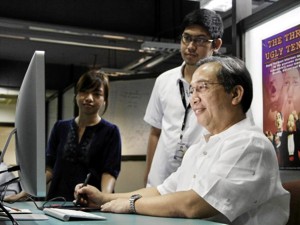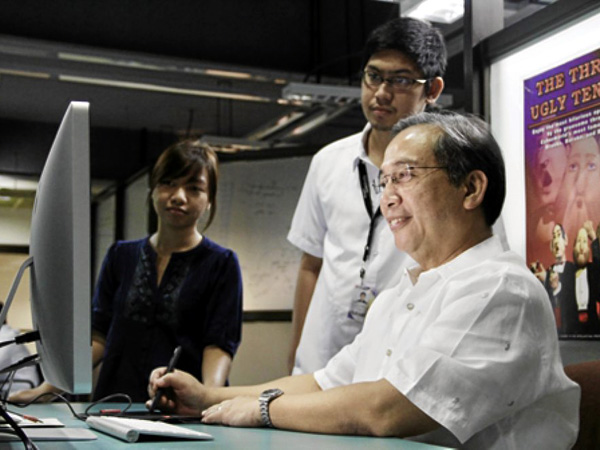
In the late 1990s, the Philippines experienced its first Information Technology (IT) boom, with dozens of schools sprouting almost overnight to offer courses in computer programming and computer applications. Young people were actively encouraged to take up IT with the promise of high-paying jobs waiting for them in the emerging technology sector.
Unfortunately, as it turned out, the emerging technology sector wasn’t quite there yet, and the bubble burst a few years later, with enrollment in some schools dropping by as much as 50 percent.
But the march of technology is inexorable. Today, the advent of “cloud computing” and 4th-generation wireless networking has brought us to the next level of computing, with Information Technology permeating and transforming more and more aspects of our daily lives.
Although the Philippines still lags behind other Southeast Asian countries in terms of PC penetration, that only means that the potential for growth is greater.
The Business Process Outsourcing (BPO) sector is expanding beyond voice services, and an increased global demand for trained IT professionals is fueling a resurgence in Information Technology education. This time, the jobs are really there, not just locally, but internationally, for IT graduates with the right skills.
One of the most challenging aspects of IT education is staying on top of trends. Information technology advances at such a rapid rate that business models could change several times in the four years it takes a computer science major to graduate. Flexibility and adaptability have become key skills for today’s IT professional.
Many local schools are rising to the challenge. One of these is the Mapua Institute of Technology.
Best known for its engineering and architecture courses, the 85-year-old school went into information technology in a big way when it was acquired by the Yuchengco Group of Companies – a diverse business conglomerate whose members include the Rizal Commercial Banking Corporation and the Malayan Insurance Company, among others – in 1999. It has since opened the Mapua School of Information Technology in a new Makati campus, through which it offers B.S. degrees in Computer Science, Information Technology and Information Management.
“Information technology education suffered for a time when the IT bubble burst in the early 2000s,” says Dr. Rey Vea, president and CEO of Mapua. “But the schools have recovered since, because IT is really here to stay. You can’t conceivably run an organization today without IT. We are now able to track every keystroke, every bit of data that goes into an organization. The volume of data has increased tremendously. The changes that have happened are mostly in the content.”
Computing is really entering the next level, he says, with the advent of “cloud computing” and new areas of application, such as mobile networking and business analytics.
“Education just follows those trends,” he says. “And maybe, in a certain sense, leads the trends in business. We are connected to cyberspace, to industry, and to other schools, so we have our ear to the ground all the time.”
The traditional notion of an academe that exists in an ivory tower, far removed from mundane concerns, won’t work for IT schools, he says.
“We have adopted what we call an outcomes-based philosophy of education,” he explains. “We define a set of learning outcomes that we desire for our graduates, and these outcomes must be relevant to the industry. That’s why we have academic advisory panels to help us define the knowledge, skills, understanding and values that our graduates should have in order to succeed in their fields.”
One way of keeping the school’s ear to the ground is through tie-ups with leading edge IT companies, which allow the school to offer “tracks” for students in specific technologies.
“One of the bigger names in cloud computing, NetSuite, is located here in Makati, and they are doing a lot of work with Filipino software engineers,” says Vea. “We have signed up with them to offer a track in cloud computing using NetSuite technology. We have allocated 12 units of electives for cloud computing.”
“With the explosion of data, the other concern is security,” he adds. “That’s what most companies have on their minds when they go into cloud computing. Mapua has been appointed by Cisco Systems to be the provider for its security module for the whole of South Asia. We go to other countries such as Singapore, Vietnam and Indonesia to train network professionals in the Cisco security module.”
The massive volume of data has also opened up another growth area of information management that has to do with analyzing this data in order to help business processes.
“It used to be called business intelligence, but more and more it is now being called business analytics,” says Vea. “We are currently in negotiations with one company to be our partner in business analytics, so we will be offering another 12 units for our track in business analytics.”
Mapua’s fastest-growing course, however, is what it calls media arts and sciences, the wedding of the creative arts, communication and technology that sees applications in web design, computer graphics, video game design, and computer animation.
“The demand for people with multimedia arts and science skills is great, but there aren’t that many graduates, so the compensation for these guys is driven up because of the demand,” says Vea. “But the economic angle is not enough to explain the phenomenon. What drives enrollment is really the interest of young people who are both artistically and technologically inclined. Most of them are attracted to it because it is the wave of the present and the future. There are scrappy, small local companies that are starting up and trying to make it on their own. Young people are coming together to do projects such as animation, web design, indie movies with a lot of CGI. It’s a dynamic part of the economy.”
Obsolescence is a given in the IT industry. The pace of technological change is so fast that several trends might have come and gone within the four years that it takes for a student to finish his or her course. The key, says Vea, is to ensure that IT students are grounded in the fundamentals before they go on to specialize, so they can stay current with the state of the art.
“What I want to see in the next five years is the Philippines being able to harness the human resources that it produces in order to be a leader in IT and IT-related businesses,” he says. “With all the talents and resources that we have, there’s a chance that we can take the lead in business process outsourcing – not just voice but IT-enabled business processes such as engineering functions which can be outsourced and which we can do right here in the country. There are definite moves in that direction and I see the Philippines getting stronger in the non-voice portion of BPO, and going further out into higher and higher value activities and services. We have to train our people to be able to reach that level.”













































